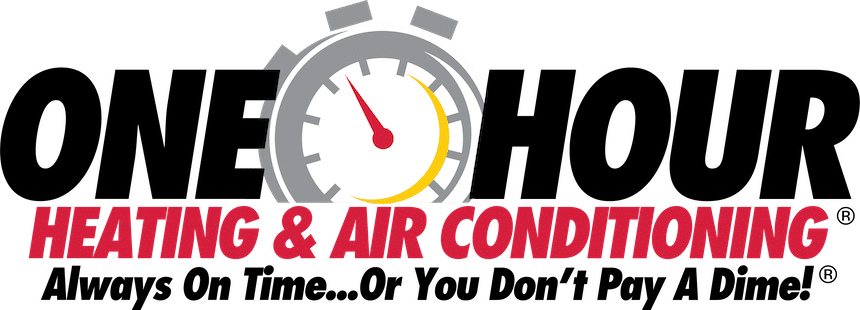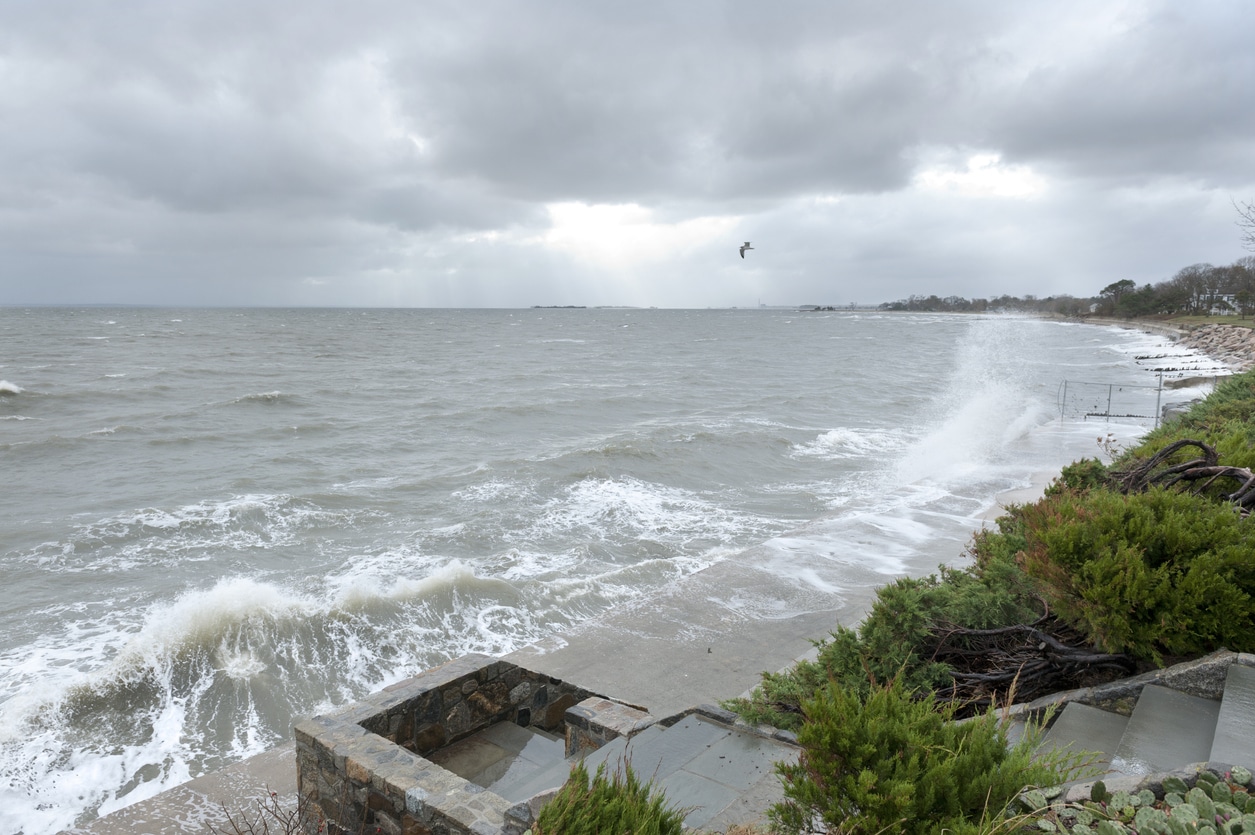- Salt Corrosion: Coastal winds carry salty moisture, leading to corrosion of metal components in HVAC systems, reducing lifespan and efficiency.
- Increased Wear and Tear: High winds can obstruct airflow and cause debris accumulation, forcing HVAC systems to work harder.
- Humidity Challenges: Coastal areas have high humidity, making it difficult for HVAC systems to maintain optimal indoor climates.
- Preventative Measures: Use protective coatings, regular maintenance, and install windbreaks to safeguard HVAC systems in coastal environments.
- Energy Efficiency: Consider upgrading to corrosion-resistant, energy-efficient models and utilize smart thermostats for better control.
Have you ever wondered how coastal winds impact HVAC performance? HVAC systems are crucial for maintaining comfortable indoor environments, especially in coastal areas where the climate can be unpredictable. Coastal winds can significantly affect HVAC systems, making it essential to understand their influence.
HVAC systems are vital for homes and businesses in coastal regions. These systems ensure that the indoor climate remains comfortable, regardless of the weather outside. However, coastal winds pose unique challenges that can compromise the HVAC performance efficiency and longevity.
Overview of Coastal Winds’ Impact on HVAC Performance
Coastal winds, characterized by their strength and salinity, can lead to increased wear and tear on HVAC systems. These winds carry salty moisture that can corrode metal components, reducing the lifespan of outdoor units. Additionally, high winds can obstruct the airflow, affecting the system’s efficiency and ability to maintain desired indoor temperatures.
Understanding the dynamics of coastal winds and their specific impact on HVAC systems is essential for homeowners and businesses in coastal areas. By taking appropriate measures, it is possible to mitigate these effects and ensure the optimal HVAC performance.
Understanding Coastal Winds
Definition and Characteristics of Coastal Winds
Coastal winds are winds that blow from the sea towards the land, bringing with them moisture and salt. These winds are influenced by various factors such as temperature differences between the land and sea, the Earth’s rotation, and local geographical features. Coastal winds are often strong and persistent, and their characteristics can vary significantly based on the specific coastal region.
Typical Wind Patterns in Savannah, Port Royal, and Hardeeville
In Savannah, coastal winds are typically southwesterly, bringing warm, moist air from the Atlantic Ocean. These winds can be quite strong, especially during storm seasons, and they often carry a high salt content.
Port Royal experiences similar wind patterns, with winds primarily coming from the southeast. These winds can also bring significant moisture and salt, impacting local HVAC systems.
In Hardeeville, coastal winds are usually southerly, influenced by the proximity to the ocean. These winds can vary in strength but often carry the same moisture and salt content, posing challenges for HVAC performance.
Understanding these wind patterns helps in designing and maintaining HVAC systems that can withstand the unique conditions of these coastal areas.
How Coastal Winds Affect HVAC Performance
Direct Impact on Outdoor Units
Coastal winds can have a direct impact on the outdoor units of HVAC systems. These winds often carry salt-laden moisture, which can lead to salt corrosion on the metal components of the units. Over time, this corrosion can weaken the structure of the HVAC unit, reducing its lifespan and efficiency. Additionally, strong winds can obstruct the airflow around the unit, causing it to work harder to maintain the desired indoor temperature. This increased workload can lead to more frequent breakdowns and higher energy consumption.
Influence on Indoor Climate Control
The effects of coastal winds are not limited to the outdoor components of HVAC systems. These winds can also influence indoor climate control. For instance, the humidity brought by coastal winds can make it more challenging to maintain comfortable indoor humidity levels.
High humidity can affect the HVAC performance of air conditioners, making them less efficient at cooling and dehumidifying the air. This can result in higher energy bills and less comfortable living environments.
Case Examples from Savannah, Port Royal, and Hardeeville
In Savannah, coastal winds have been known to cause significant corrosion on HVAC units, leading to increased maintenance costs and reduced system lifespans. Similarly, in Port Royal, residents often face challenges with maintaining optimal indoor humidity levels due to the moisture-laden winds. Hardeeville experiences similar issues, with many homeowners reporting frequent HVAC repairs and higher energy bills as a result of the coastal winds’ impact.
These examples highlight the importance of understanding and addressing the unique challenges posed by coastal winds to ensure the efficient and long-lasting HVAC performance in these areas.
Challenges Faced by HVAC Systems in Coastal Areas
Salt Corrosion and Its Effects
One of the most significant challenges for HVAC systems in coastal areas is salt corrosion. The salty moisture carried by coastal winds can quickly corrode metal components, such as coils and casings. This corrosion can lead to leaks, reduced efficiency, and even complete system failure if not addressed promptly. The constant exposure to salt-laden air accelerates the wear and tear on HVAC units, making regular maintenance and protective measures essential.
Increased Wear and Tear from High Winds
High winds common in coastal areas can cause additional wear and tear on HVAC systems. These winds can carry debris, which can get lodged in the outdoor unit, causing damage to the fan, fins, and other components. The mechanical stress from strong winds can also impact the alignment and balance of moving parts, leading to increased mechanical wear and more frequent need for repairs.
Humidity and Its Impact on HVAC Efficiency
Humidity is another critical factor affecting HVAC performance in coastal areas. High humidity levels can make HVAC systems work harder to cool and dehumidify indoor air, leading to increased energy consumption and wear on the system. Excessive humidity can also promote mold growth within the HVAC system and ductwork, posing health risks and further reducing system efficiency. Maintaining proper humidity levels is essential for both comfort and the longevity of HVAC systems.
Addressing these challenges requires a combination of regular maintenance, protective measures, and selecting HVAC systems designed to withstand coastal conditions. By understanding and mitigating these issues, homeowners and businesses can ensure their HVAC systems operate efficiently and reliably, even in the harsh coastal environment.
Common HVAC Problems in Coastal Regions
Shortened Lifespan of HVAC Components
In coastal regions, HVAC performance often face a shortened lifespan due to the harsh environmental conditions. Salt corrosion is a primary culprit, deteriorating metal parts and electrical components faster than in non-coastal areas. Additionally, the constant exposure to moisture can lead to rust and other forms of degradation. As a result, HVAC units in coastal regions typically require replacement more frequently than those in inland areas.
Frequent Maintenance Needs
Given the increased wear and tear from salt, wind, and humidity, HVAC systems in coastal areas require frequent maintenance to remain operational. Regular inspections are crucial to identify and address early signs of corrosion, debris build-up, and other issues before they lead to major breakdowns. Preventative maintenance, such as cleaning coils, replacing corroded parts, and applying protective coatings, helps extend the system’s life and ensures efficient HVAC performance.
Energy Inefficiency Issues
The environmental conditions in coastal areas can lead to energy inefficiency in HVAC systems. High humidity levels force the systems to work harder to cool and dehumidify indoor air, resulting in increased energy consumption. Corroded and clogged components also reduce the system’s efficiency, leading to higher energy bills. Ensuring that the HVAC system is well-maintained and optimized for coastal conditions is essential to minimize energy wastage and maintain reasonable operating costs.
To combat these common problems, homeowners and businesses should invest in HVAC systems specifically designed for coastal environments, adhere to regular maintenance schedules, and implement protective measures to guard against the harsh coastal elements.
Preventative Measures for Coastal HVAC Systems
HVAC Performance: Protective Coatings and Materials
One effective way to protect HVAC systems in coastal areas is by using protective coatings and materials. Applying anti-corrosion coatings to metal components, such as coils and casings, can significantly reduce the impact of salt corrosion. These coatings create a barrier that prevents moisture and salt from reaching the metal surfaces. Additionally, using materials that are inherently resistant to corrosion, like stainless steel or coated aluminum, can enhance the durability of HVAC systems in harsh coastal environments.
Regular Maintenance Schedules
Implementing a regular maintenance schedule is crucial for maintaining the efficiency and longevity of HVAC systems in coastal areas. This includes routine inspections, cleaning, and servicing of both indoor and outdoor units. Regularly cleaning the coils, checking for signs of corrosion, and replacing any worn-out components can prevent small issues from escalating into major problems. Homeowners and businesses should work with professional HVAC contractors to establish a comprehensive maintenance plan tailored to the specific challenges of coastal climates.
Windbreaks and Other Structural Solutions
Installing windbreaks and other structural solutions around outdoor HVAC units can help mitigate the impact of high winds and airborne debris. Windbreaks, such as fences or strategically placed shrubs, can reduce the force of the wind hitting the unit, thereby protecting it from physical damage and debris accumulation. Additionally, ensuring that the outdoor unit is installed in a sheltered location, away from direct exposure to prevailing winds, can further enhance its protection and HVAC performance.
By implementing these preventative measures, homeowners and businesses in coastal areas can significantly improve the resilience and efficiency of their HVAC systems, ensuring reliable HVAC performance and extending the lifespan of their equipment.
Optimizing HVAC Performance in Coastal Areas
HVAC Performance: Choosing the Right System for Coastal Climates
Selecting the appropriate HVAC system is crucial for optimal HVAC performance in coastal climates. Look for systems designed with corrosion-resistant components. Units with coils made from materials like copper or coated aluminum are more durable in salty environments. Additionally, choosing a system with a high SEER (Seasonal Energy Efficiency Ratio) rating ensures better energy efficiency, which is essential in areas with high humidity and temperature fluctuations.
Installation Tips for Coastal HVAC Units
Proper installation can significantly impact the longevity and efficiency of HVAC systems in coastal areas. Ensure the outdoor unit is installed in a sheltered location, away from direct exposure to coastal winds. Elevating the unit can help protect it from flooding and debris. Use sturdy, corrosion-resistant mounting brackets and hardware to secure the unit. Also, make sure that the unit has ample airflow around it by keeping it clear of obstructions like plants or fencing.
Enhancing Insulation and Sealing
Good insulation and sealing are vital for maintaining indoor comfort and reducing the strain on HVAC systems in coastal climates. Ensure that ductwork is properly sealed to prevent air leaks, which can lead to energy loss and decreased efficiency. Adding insulation to attics, walls, and floors can help maintain a consistent indoor temperature, reducing the workload on the HVAC system. Use weather stripping around windows and doors to further improve energy efficiency and keep out humid air.
By focusing on these optimization strategies, homeowners and businesses in coastal areas can ensure their systems operate at peak HVAC performance, providing reliable comfort and efficiency despite the challenges posed by the coastal environment.
Seasonal HVAC Maintenance Tips
HVAC Performance: Pre-Summer and Pre-Winter Checks
Regular seasonal maintenance is crucial to keep HVAC systems running efficiently in coastal areas. Before summer begins, schedule a pre-summer check to ensure your air conditioning system is ready to handle the hot, humid weather. This includes cleaning or replacing air filters, checking refrigerant levels, inspecting and cleaning coils, and ensuring that the outdoor unit is free of debris and corrosion.
Similarly, a pre-winter check is essential to prepare heating systems for the cooler months. This involves inspecting the furnace, cleaning or replacing filters, checking the thermostat settings, and ensuring that the system’s heat exchanger is functioning correctly. These checks help prevent unexpected breakdowns and maintain optimal HVAC performance throughout the year.
Specific Advice for Savannah, Port Royal, and Hardeeville Climates
For residents of Savannah, Port Royal, and Hardeeville, consider the unique climatic challenges of these areas. In Savannah, the high humidity levels can strain HVAC systems, making regular dehumidifier maintenance crucial. Port Royal, with its salty sea breezes, may require more frequent coil cleaning and anti-corrosion treatments. In Hardeeville, where seasonal temperature swings can be significant, it’s essential to ensure that both cooling and heating components of your HVAC system are in top condition.
Additional Tips
- Clean Air Ducts: Periodically clean your air ducts to remove dust, mold, and other contaminants that can reduce indoor air quality and HVAC efficiency.
- Check Thermostat Settings: Ensure your thermostat is set to optimal temperatures for energy savings and comfort.
- Inspect Insulation: Verify that your home’s insulation is intact and effective in preventing heat loss or gain.
- Professional Inspections: Hire a professional HVAC technician to conduct thorough inspections and maintenance at least twice a year.
By following these seasonal maintenance tips, homeowners and businesses in coastal areas can ensure their HVAC systems run efficiently and reliably, providing comfort and energy savings throughout the year.
Energy Efficiency Tips for Coastal HVAC Systems
Best Practices for Reducing Energy Consumption
Energy efficiency is crucial for HVAC systems in coastal areas, where environmental conditions can drive up energy usage. Here are some best practices to help reduce energy consumption:
- Regular Maintenance: Keep your HVAC system well-maintained with regular inspections, cleaning, and servicing. This ensures the system operates efficiently and prevents small issues from becoming major problems.
- Programmable Thermostats: Use a programmable thermostat to set temperature schedules that align with your daily routines. This helps avoid unnecessary heating or cooling when you’re not at home.
- Seal Leaks: Ensure that your home is well-sealed to prevent cool or warm air from escaping. Check for leaks around windows, doors, and ductwork, and seal them with weather stripping or caulk.
- Ceiling Fans: Use ceiling fans to help circulate air, allowing you to set your thermostat a few degrees higher in summer or lower in winter without sacrificing comfort.
Upgrading to Energy-Efficient Models
Investing in energy-efficient HVAC models can yield significant savings in the long run. Look for units with a high SEER rating for air conditioners and a high AFUE (Annual Fuel Utilization Efficiency) rating for furnaces. These ratings indicate the efficiency of the units; the higher the rating, the more efficient the system.
Utilizing Smart Thermostats and Technology
Smart thermostats and other advanced technologies can further enhance energy efficiency. Smart thermostats learn your habits and adjust the temperature automatically for optimal energy savings. They can also be controlled remotely via smartphone apps, allowing you to adjust settings even when you’re not home.
Additional Energy-Saving Tips
- Optimize Airflow: Ensure that vents and registers are not blocked by furniture or curtains, allowing for efficient airflow throughout your home.
- Use Window Treatments: Use blinds, curtains, or shades to block out heat during the day in summer, reducing the load on your air conditioning system.
- Insulate Ductwork: Properly insulated ductwork helps maintain the desired temperature of the air being circulated, reducing energy waste.
By implementing these energy efficiency tips, homeowners in coastal areas can reduce their HVAC energy consumption, lower their utility bills, and contribute to a more sustainable environment.
Professional HVAC Services in Coastal Areas
Finding Reliable HVAC Contractors in Savannah, Port Royal, and Hardeeville
In coastal areas like Savannah, Port Royal, and Hardeeville, finding reliable HVAC contractors is crucial for ensuring the longevity and efficiency of your HVAC system. When searching for a contractor, look for companies with extensive experience in coastal environments. These contractors will be familiar with the unique challenges posed by salt corrosion, high humidity, and strong winds. Additionally, check for proper licensing, insurance, and positive customer reviews to ensure you are hiring a reputable service provider.
Importance of Professional Inspections and Tune-Ups
Regular professional inspections and tune-ups are essential for maintaining the HVAC performance and efficiency in coastal areas. Professional technicians can identify and address potential issues before they escalate into costly repairs. During inspections, they will clean and lubricate components, check refrigerant levels, and inspect for signs of corrosion or wear. These preventative measures help extend the life of your HVAC system and ensure it operates at peak efficiency year-round.

Frequently Asked Questions (FAQ)
- How do coastal winds affect my HVAC system?
Coastal winds can carry salt-laden moisture that leads to corrosion on metal components of your HVAC system. This can reduce the system’s efficiency and lifespan, requiring more frequent maintenance and potentially higher repair costs.
- What are the best HVAC systems for coastal areas?
The best HVAC systems for coastal areas are those with corrosion-resistant components, such as coils made from copper or coated aluminum. High SEER-rated units are also recommended for their energy efficiency.
- How often should I schedule maintenance for my HVAC system in a coastal region?
It’s recommended to schedule maintenance for your HVAC system at least twice a year – before the summer and winter seasons. Regular maintenance helps to identify and address issues early, preventing major breakdowns and ensuring efficient operation.
- Can installing windbreaks help protect my outdoor HVAC unit?
Yes, installing windbreaks such as fences or strategically placed shrubs can help protect your outdoor HVAC unit from high winds and debris. This can reduce physical damage and improve the unit’s efficiency.
- Are there specific HVAC maintenance tips for Savannah, Port Royal, and Hardeeville?
Yes, in Savannah, focus on maintaining dehumidifiers due to high humidity. In Port Royal, regular coil cleaning and anti-corrosion treatments are crucial. In Hardeeville, ensure both cooling and heating components are in top condition to handle significant temperature swings.











